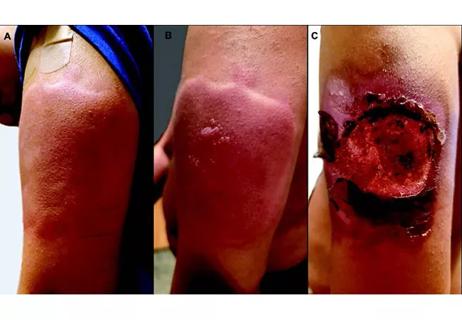A Q&A with Nazleen Bharmal, MD, PhD

It’s a seismic shift for a world-class quaternary medical center to become a champion of population and community health. Yet Cleveland Clinic has joined others in recognizing the importance of community health — given that only 20% of a population’s health is due to medical care, while 80% is due to social, economic, environmental and behavioral factors.
Advertisement
Cleveland Clinic is a non-profit academic medical center. Advertising on our site helps support our mission. We do not endorse non-Cleveland Clinic products or services. Policy
The rumblings of culture change started years ago with caregiver and enterprise initiatives like community health screenings and the Evergreen Cooperatives for economic development in low-income neighborhoods near Cleveland Clinic’s main campus.
In 2018, Cleveland Clinic implemented a synergistic population health approach, Cleveland Clinic Community Care and appointed a Chief of Population Health, Adam Myers, MD. In 2019, the effort developed further as Nazleen Bharmal, MD, PhD, was named Medical Director of Community Partnerships.
In this Q&A, Dr. Bharmal talks about her trailblazing role and Cleveland Clinic’s growing efforts in community health.
What prepared you for your position as Medical Director of Community Partnerships?
To learn more about social determinants of health and policy change, I earned higher degrees in health policy and was a health disparities researcher. I also served as Director of Science and Policy in the Office of the Surgeon General at the U.S. Department of Health and Human Services. This role helped me see how healthcare systems and communities were embracing population and community health. That understanding has prepared me for this new role.
I’m an internal medicine physician in Cleveland Clinic’s Department of Internal Medicine and Geriatrics. I enjoy the one-on-one interactions with patients and have always been interested in amplifying those experiences to impact change on a community and policy level.
What are your responsibilities now?
I’m part of the Cleveland Clinic Community Care leadership team and co-lead Cleveland Clinic’s community health strategy steering committee. I also serve as the strategic clinical liaison to our community health and relations team.
Advertisement
Population health isn’t only about chronic disease management and treatment. It is about promoting health instead of reacting to an episode of illness. It is a holistic approach to improving health outcomes for a group of individuals and ensuring health equity. It’s also about preventing disease and helping patients, families and communities thrive by focusing on upstream factors, like access to fruits and vegetables, having safe places to walk and be active, health literacy, educational attainment and employment, housing and other socioeconomic concerns that contribute to health.
If healthcare’s focus is moving from sick care to well care, we need to consider all of the determinants of health.
What are some key elements of Cleveland Clinic’s community health strategy?
Our community health strategy is anchored in community and economic development. Since Cleveland Clinic is a major employer in the region, our strategy leverages our economic power and human capital for the mutual benefit of our community and institution, with a focus on youth education leading to workforce development.
We are working regionally to address critical public health issues, such as infant mortality, suicide, opioid and other drug overdose deaths, chronic disease morbidity and mortality, and issues that stem from poverty.
To address the upstream factors that contribute to health, we partner with groups outside of the healthcare sector, such as schools, businesses, faith-based organizations, local government, public health organizations, law enforcement, community-based organizations and social service agencies. We look for organizations that already have expertise and the trust of a community. And we work with them to take health from inside clinical walls to places where people live, learn, work and play.
Advertisement
Cleveland Clinic Community Care caregivers also screen community residents and/or patients for health behaviors and socioeconomic needs, including employment needs. Then we work to remove their barriers to wellness by connecting them to resources, either at Cleveland Clinic or in their community.
How does Cleveland Clinic define the community it serves?
Our target population includes three overlapping groups:
How have you responded to the COVID-19 pandemic?
Our community health response to COVID-19 has been to connect, communicate and mitigate, and we’ve taken a three-pronged approach to sharing information and hearing/responding to concerns:
1. Weekly meetings with local officials (mayors, school superintendents, fire/police, local council members) and hospital presidents.
2. Regular communication with community-based organizations and stakeholders.
3. Direct outreach to community residents who have been part of community benefit programs.
Our focus has been on the most vulnerable communities that are at greatest risk for resurgence or outbreak and the organizations that meet their health and social, economic and behavioral needs. This includes older adults with chronic conditions, racial/ethnic minorities with limited English proficiency, and those who are economically disadvantaged and/or live in resource-challenged neighborhoods.
Advertisement
In addition, we have instituted a community monitoring program for Cleveland Clinic-attributed patients for suspected or confirmed COVID-19. The monitoring program is in conjunction with the health department to have daily outreach by nurses for these patients over a 14-day period. The program has reached tens of thousands of patients across Northeast Ohio.
How do you measure the success of population health efforts?
Population health is focused on improved health outcomes through better quality patient care and experience, lower healthcare costs and higher caregiver satisfaction.
To gauge the success of population health efforts, we measure patient care and health outcomes, such as receipt of clinical preventive services (e.g., cancer screening, blood pressure checks, immunizations) and prevention of chronic disease or disease severity. We also want to see less use of the emergency department for non-emergency issues, fewer 30-day readmissions after a hospital stay and greater use of primary care, for example.
We should ensure that we are closing health disparity gaps and achieving health equity. And we want to ensure that patients feel part of the healthcare decision-making process and that our clinical caregivers have resources to increase meaning and value in their work to counteract burnout.
Nationally, we want to see wiser use of healthcare dollars. The U.S. spends about 18% of gross domestic product (GDP) on healthcare. That’s more than any other country. Yet other countries have better healthcare outcomes than we do. We’re not getting the biggest bang for our buck. Another measure of population health success would be to bend that cost curve and spend less of our GDP on healthcare so there’s more money to spend on education, defense, infrastructure and other national priorities.
Advertisement
Ultimately, we want to see communities of people who are healthier. That doesn’t just mean with less disease, but with a state of complete physical, mental and social well-being. We want to see communities with cleaner air, more sidewalks and recreation opportunities, better education systems and more stable housing. These upstream things are important contributors to population health. And now as we face the seriousness of the COVID-19 pandemic, these efforts are more important than ever.
Advertisement

Patients report improved sense of smell and taste

Clinicians who are accustomed to uncertainty can do well by patients

Unique skin changes can occur after infection or vaccine

Cleveland Clinic analysis suggests that obtaining care for the virus might reveal a previously undiagnosed condition

As the pandemic evolves, rheumatologists must continue to be mindful of most vulnerable patients

Early results suggest positive outcomes from COVID-19 PrEP treatment

Could the virus have caused the condition or triggered previously undiagnosed disease?

Five categories of cutaneous abnormalities are associated with COVID-19